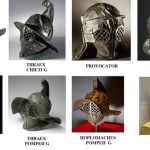Preserved under volcanic ash, the monuments of Pompeii, a city affected by the eruption of Vesuvius in 79 CE, are endangered by the Italian bureaucracy and heavy rainfall. The city was discovered by archaeologists in the 18th century and to this day is a unique source of knowledge about the everyday life of the Romans.
Many buildings in the city are waning and some of them are just collapsing. An example is an arch that supports the Temple of Venus, the Roman goddess of beauty, which was disturbed by one of the storms. On another day, several walls collapsed in various parts of Pompeii.
Pompeii is visited by an average of two million tourists a year, which has an impact on the condition of the monuments. The most public opinion despaired in 2010 when the famous Gladiators’ School collapsed. There were voices suggesting the irresponsibility of Italians for monuments in Italy and the need to improve operations. The European Union decided to support the Italian authorities with a grant of 105 million (acquisition hampered by complaints from private companies) for a project to maintain the conservation of monuments. The project to protect the monuments in Pompeii is very much needed. Without this support, Pompeii is believed to collapse completely.







